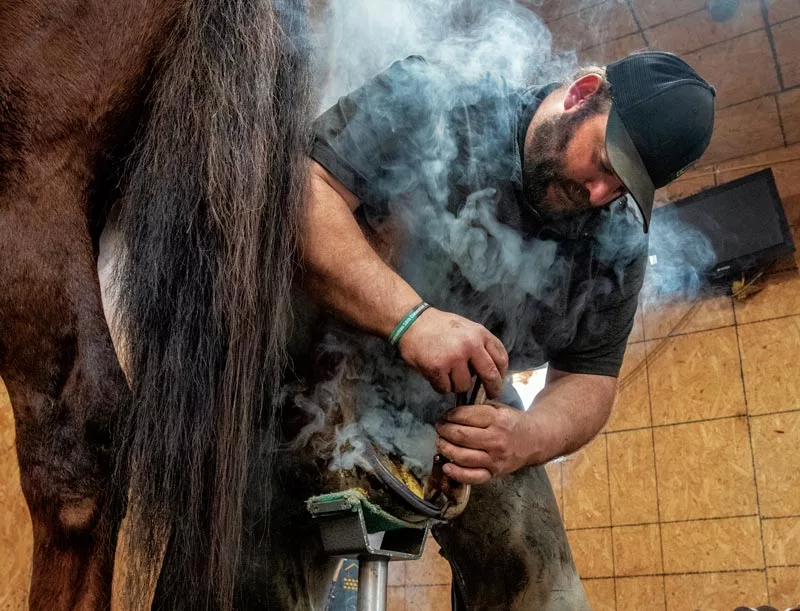American Farriers Journal
American Farriers Journal is the “hands-on” magazine for professional farriers, equine veterinarians and horse care product and service buyers.

Jake Stonefield burns on a 7/8 fullered St. Croix Advantage shoe on a barrel horse named Fire. The sorrel gelding has a slippery hind end and after some trial and error, Stonefield found a happy medium for the horse to perform well in barrel races.
Conventional wisdom suggests farriers must travel to their hoof-care clients if they want to stay in business. After all, what motivation do clients have to surrender the convenience of their shoer arriving at their barn to perform a valuable service?
Once upon a time, Jake Stonefield counted himself among the skeptics. He knew his buddy Allan Voeller was thriving with a haul-in practice, but that’s in Bismarck, N.D. The state capitol has a healthy 74,429 population within its city limits, and that doesn’t include the surrounding suburbs and rural residences. Meanwhile, there are more cattle in the neighboring pasture than the 107 souls who join Stonefield in calling Brandt, S.D., home.
“A haul-in practice can’t work for me,” he recalls telling Voeller. “There’s no way.”
Make no mistake, Stonefield was busy. He was putting in 16-hour days — 6 hours of which were spent behind the wheel driving 200 miles a day — shoeing up to 10 horses daily.
“I was stressed out because of the…